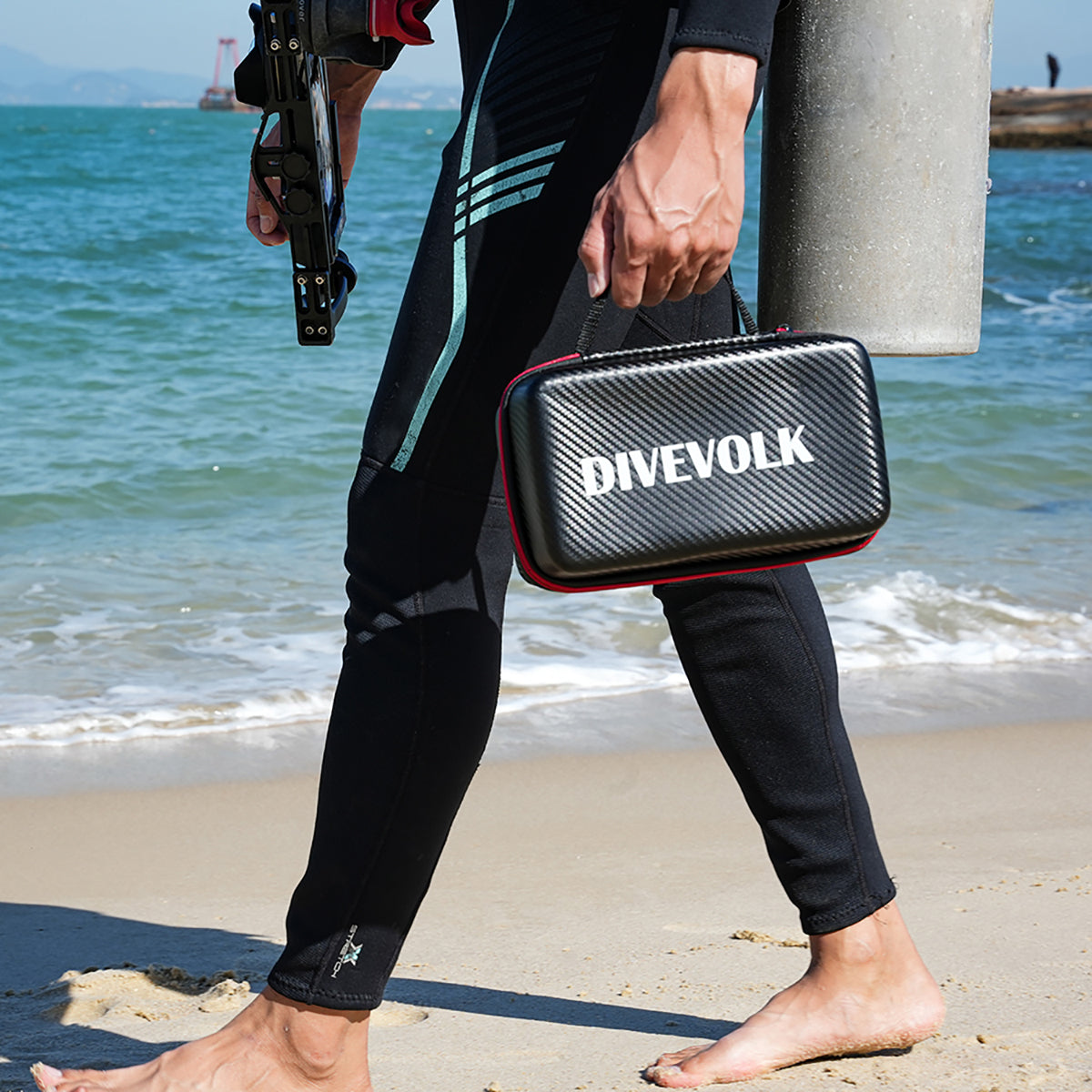I. Introduction
Your DIVEVOLK underwater housing is a powerful tool designed to unlock the full potential of your smartphone beneath the waves. To ensure you have the best and safest experience on every dive, it’s important to understand a few key operational details. This guide will walk you through common phenomena, useful techniques, and frequently asked questions to help you master your gear.
II. Explanation of the Bubble Phenomenon
1. Why Do Bubbles Appear?
You may occasionally notice small air bubbles in the touchscreen membrane. This is a normal result of the manufacturing process, where a minuscule amount of air can become dissolved in the internal oil film. The vacuum system used in production cannot ensure 100% of this dissolved air is removed, and under specific environmental conditions (such as high altitude or high temperatures), this air can be released, forming bubbles. This is a common characteristic of this type of housing design.
2. Do Bubbles Affect the Housing?
No. The presence of these small bubbles will not affect the touchscreen's operation or the housing's waterproof integrity. It is a normal phenomenon, and you do not need to worry about it being a quality or operational issue.

Small bubbles like these are normal and do not affect performance.
III. Underwater Operation Techniques
1. Underwater Sensitivity
The dual-layer oil membrane of the housing is designed for a soft, responsive touch underwater. For the best results, please note the following:
- It is essential to remove your phone's screen protector before use to ensure the highest level of touch sensitivity underwater.
- We recommend testing the touchscreen's responsiveness in a basin of water before your first dive to get a feel for it. Note that on land, without external water pressure, a slightly firmer press is required.
2. Restoring Touch Fluidity at Depth (The "Squeegee" Technique)
At depths below 20 meters, factors like lower water temperature can sometimes affect the oil's viscosity, making the screen feel less sensitive. To fix this, you can perform a simple action to smooth the oil film.
Please refer to the technique shown in the video below. The key is to apply gentle and even pressure across the screen to flatten the oil membrane, restoring smooth operation.
IV. Phone Settings & Accessibility Features
1. Pre-Dive Phone Settings
iPhone Settings:
- Enable the AssistiveTouch button.
- Enable the Raise to Wake function.
- Disable Auto-Brightness.

Android System Settings:
- Please refer to your phone's user manual to find and enable similar settings, such as an "Assistive Ball" or "Floating Dock," and to optimize screen wake and brightness settings.
2. The Purpose of These Functions
- AssistiveTouch Button: This provides an easy on-screen button to access controls, reducing the need to swipe up from the bottom of the screen. This minimizes uneven pressure on the housing's seal, lowering the risk of oil leakage.
- Raise to Wake: This allows for simple and quick screen viewing underwater without needing to touch the screen.
- Disable Auto-Brightness: This prevents the screen from dimming or brightening unexpectedly as underwater light conditions change, ensuring a consistent view.
V. Common Questions & Solutions
Problem: Taking a Short Video Instead of a Photo
- Cause: This usually happens when the on-screen shutter button is pressed too hard or held for too long, which triggers the phone’s built-in "Live Photo" or "Burst Mode" feature that can be compiled into a video clip.
- Solution: To capture a single still image, control your press. Practice using a lighter, quicker tap on the shutter button to avoid this misoperation.
Conclusion
By understanding these key operational details, you can ensure a seamless, enjoyable, and successful experience every time you take your DIVEVOLK housing into the water. We highly encourage you to review this guide, the tutorial videos, and your housing's instruction manual to become fully familiar with its features and get the most out of your underwater adventures.


